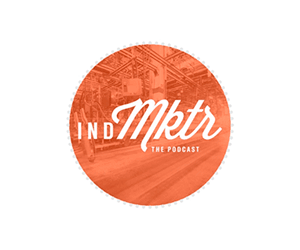“The greatest danger to our future is apathy.”
—Jane Goodall
So, what is “Native Advertising?” In the simplest terms, native advertisements are paid placements within a content channel where the ad units mimic the style and tone of the surrounding content. So, if it’s a news outlet, the paid placement will look and read like a news story; and if it’s a clickbait site like Clickhole or Buzzfeed, it will resemble the pop culture posts that populate them.
Native advertising is a natural evolution of online advertising methods given growing audience apathy toward “traditional” online ads. For example, recent studies show that display ads see an average 0.06% click-through rate. To be effective, today’s ads need to blend in with the content their target audiences are consuming.
Types of Native Advertising
According to the IAB, there are six different categories of native advertising:
- In-Feed – native ads that mimic the look and style of a publisher’s standard content, but that are disclosed to be advertising content
- Paid Search – ads that appear in the search results and mimic the look and feel of search listings
- Recommendation Widgets – articles presented within a separate box on a website with a section header like “Other Stories You May Like” or “Sponsored”
- Promoted Listings – found usually on ecommerce sites, promoted listings look identical to the products/services offered on a given site (e.g. Amazon’s sponsored products)
- In-Ad (with native elements) – a sponsored placement in a separate container that is an ad designed to match the feel of the publisher’s website, but that promotes a piece of content on a separate landing page
- Custom/”Can’t Be Contained” – a catch-all for any ads that do not meet the specifications of the other types of native advertising
For the purposes of this “Tools of the Trade” review, we will focus on the In-Feed, Recommendation Widgets, and In-Ad categories and the most-used platforms that offer them.
If you’re ready to explore how native advertising can increase your advertising conversion rates and help you attract more paying customers through content, let’s dive in!
Native Advertising Platforms
Outbrain
Recommendation Widget
Currently, Outbrain is the big boy in the world of native advertising. They lead the Recommendation Widget category and nearly 80% of the world’s leading brands use the platform.
Outbrain gained quick popularity by building relationships with some of the largest publishers in the world, including CNN.com, People, ESPN.com, and Slate.com. They continue to grow by providing options that benefit both advertisers and publishers.
Outbrain’s signature set of features includes:
- Daily budget pricing model (set a daily budget and a price per click)
- Product/supplier sourcing
- Testing and optimization tools
- Targeting options to get content to the right people
- Customizable modules (for publishers)
- Mobile-friendly designs and modules (for publishers)
Taboola
Recommendation Widget
Taboola originated as a video recommendation tool. Since then, it has shifted to focus more on promoting content across heavily trafficked websites to “the right audience at-scale.”
Taboola claims to reach 550 million unique monthly viewers through their network of publisher sites including Business Insider, The Weather Channel, The Atlantic, TMZ, NBC, and Yahoo!
Taboola’s major features include:
- Cost-per-click pricing model
- In-depth analytics dashboard
- Predictive algorithm for content targeting
Sharethrough
In-Feed
Forty-six of the top 50 AdAge Megabrands use the Sharethrough Ad Manager for native advertising content marketing. Sharethrough is the first system on our list that is primarily an In-Feed native advertising exchange, allowing companies to sponsor any form of created content (e.g., video, article, social post) through its network of publisher partners.
Sharethrough’s partnership with publishers such as Forbes, Real Simple, and People give it the clout to pull in nearly 247 million viewers each month and their in-depth integrations with third-party advertising exchanges allow for cross-device targeting, using both Sharethrough’s “first-party” targeting parameters matched with in-exchange “third-party” targeting parameters to deliver a comprehensive spectrum of targeting options.
Here’s a summary of some of Sharethrough’s most important features:
- In-Feed distribution
- Automatic formatting to match publisher style
- Ability to promote nearly any content form
- Unlimited multivariate testing
- First- and third-party targeting
- Real-time analytics
OneSpot
In-Ad
OneSpot takes a different approach to native advertising than the other platforms on our list so far. OneSpot doesn’t so much focus on the sites target audiences visit, but rather the target audience members themselves, by building a hybrid remarketing and native advertising experience.
OneSpot has built connections with multiple ad exchanges and combines those relationships with cookies to deliver a series of selected content pieces to website visitors in a specific order using publisher sites, email, social media, and more.
It is an interesting model, but it does require that people come to your site to initiate the process, whereas the other systems base their actions around brand discovery rather than target nurturing.
The OneSpot platform has many benefits, including:
- Multiple ad exchange networks, including CNN.com, Facebook, and more
- Target tracking through websites, banner networks, social, and email
- Automatic content formatting for target channels
- Algorithmic content selection based on target user history
- ESP integration
TripleLift
In-Feed
TripleLift makes no secret that its main point of differentiation in the world of native advertising is its image engine. They use an approach known as “Programmatic Native Advertising” but claim to have “gone a step further creating an RTB-enabled native ad exchange to allow advertisers buying media programatically to leverage their existing buying platforms to access premium, in-feed native ads.”
Basically, all the TripleLift system needs is an image, a logo, a headline, and a landing page. Then the system uses the pre-set targets to optimize the image for any device or channel to populate multiple outlets with a single piece of content.
Here is a breakdown of the benefits of TripleLift:
- Automatic image sizing
- In-Feed placement in premium publications
- 65 billion monthly impressions
- Reporting dashboard
Nativo
In-Feed
Nativo is another tool that uses a programmatic platform to shape your content to match the look and feel of editorial streams within its distribution network. They also claim that their specific process improves native ad performance by 300%.
Nativo’s network includes around 400 different publishers. Due to their programmatic stance, advertisers do not pick the outlets their content shows up in. Rather, the system uses keywords in the content pieces to match content to destinations.
Here’s a shortlist of some of the things Nativo offers:
- Programmatic listing of a single campaign across multiple platforms and outlets
- Auto-formatting of content to match editorial look and feel
- Automated A/B multivariate testing
- In-depth reporting dashboard that drills down to individual post performance
Instinctive
In-Feed
Instinctive is one of the few native advertising platforms that talks about “earned media” as a driver for their platform. In contrast to other platforms, Instinctive focuses on enabling users to take content they’ve created for non-advertising purposes and sponsor it across the Internet.
They’ve patented a technology they are calling Fully NativeTM which integrates content written on other sites to match editorial streams and tracks engagement down to the second, enabling real-time analytics and adjustments. They are also one of the only services to offer an enterprise-level platform with full service.
Here are some of the other Instinctive features:
- 100% visibility guarantee
- To-the-second analytics
- Programmatic integration
- Any content type for multiple ad formats
- Enterprise-grade console
AdsNative
In-Feed/In-Ad
The only system on our list that uses multiple native ad categories to widen its reach is AdsNative. Their mission is to “give the internet back to users . . . that means powering monetization for the most savvy publishers and app developers.” To put it more simply, they want to build a “bannerless internet.”
Started in 2013, AdNative has been building an ad exchange that includes over 1,000 publishers and that supports a wide variety of native advertising types. Additionally, AdsNative has taken it a step further by offering companies a white-label option so that they can use the technology and infrastructure within their own pages and applications.
Other benefits include:
- Display and video ad formats
- Use of both AdsNative ad exchange and native ad networks
- Open/RTB Exchange
- Ad scheduling tools
- In-depth analytics
The Forest for the Trees
By now, you’ve probably realized that the landscape of possibilities is not limited when it comes to native advertising. Aside from these systems, there is always the option of going directly to publishers. Honestly, the hardest part when it comes to native advertising is deciding where to start.
I’ll answer that for you: You should start by developing content.
It’s easy to get lost in the forest of native advertising options and forget that the bigger issue is finding a way to connect your target audiences with pieces of content that will benefit them and paint you in a good light at the same time. By spending time creating wonderful content, you will have a wealth of options to plug into whichever native advertising tool you choose. At that point, it simply becomes a question of targeting your audiences and analyzing your engagement rates.
Surmounting user apathy when it comes to advertising can be tough. But by integrating your content into the publications that your audiences already consume, it will become easier to connect with and nurture prospects into becoming customers and, eventually, advocates for your brand.




